目录
第八章-Java-AMQP-Client源码分析
1、背景
1.1 客户端介绍
1.2 看源码好处
1.3 如何看源码
2、生产者
3、消费者监听
4、创建连接
5、消费者消费
6. 总结:
第八章-Java-AMQP-Client源码分析
1、背景
1.1 客户端介绍
通过前面几章的学习,大家对rabbitmq 的基本使用应该ok了,但有的同学可能仍然不满足先去看看Rabbitmq如何实现的,由于rabbitmq 使用Erlang实现的,大家可以自行研究。
看不了mq的实现,可以看下他的客户端的实现。客户端也有多种语言的实现,我们以java的amqp-client来看。
<dependency>
<groupId>com.rabbitmq</groupId>
<artifactId>amqp-client</artifactId>
<version>5.7.3</version>
</dependency>1.2 看源码好处
另外有些同学会有疑问,能用不就行了,看这源码有啥用呢。
首先,看源码能满足我们的好奇心,做到知其然又知其所以然。
其次,在实际运用的过程中,出现的一些问题,需要靠看源码来分析解决。例如,我们之前发现mq的消费很慢,但是消费者处理速度和生产者处理的速度都很快,所以想从mq的客户端看看,有没有什么瓶颈。
再有,看源码能提升我们的编码能力,学到很多优秀的编码习惯,算法,架构等等。既然这些中间件能开源出来,被广泛使用,肯定有他优秀的地方,开阔自己视野,站在巨人的肩膀上看世界。
等等...
1.3 如何看源码
有的同学可能认为,直接拔开就看呗,一个类一个类的,一个方法一个方法的看。从上往下。不可否认这是一种看法,但这不太适合初期刚看代码的时机,会搞的很懵,直接失去看源码的兴趣。
总结几个小方法:
1、可以把源码下载到本地,部署起来,一定要能跑起来。另外也可以省事些,在IDE里面点进Jar包,下载源码,直接从Jar包里看。
2、按图索骥,看的时候一定不是按一个网来看的,而是专注的一个点,从这个点进去,一步一步跟随到源码中,串成一条线,最后很多的线就会组成一个网,是逐步按照 点、线、面的方式来。
3、开启Debug,直接读有时候会绕进去,找不到绕出来的方向,因为源码中各个类的实现关联都很多,不如直接按Debug模式,跟随着读进去。这里面有一个很重要的点,-有的源码中是靠新启线程实现的,所以记得Debug断点的时候,要使用Thread模式哦。
4、抓大放小,读源码我们有时候需要一些不求甚解,需要一些模棱两可,我们无法搞懂所有的东西,特别是刚读的时候,但我们一定要清楚哪些是主线,哪些是边角料。把主线搞清楚即可。
5、Again and Again, 源码不可能一遍就让你读懂,都熟悉。这是需要不断的重复的一个过程,一遍不懂,就再来一遍,十遍不行就 二十遍,三十遍,每一遍都会有新的收获。
6、坚持,不轻易放弃。
后续我们看源码的这几个点,也是按照我们之前讲过的 RabbitMQ的 Simple模式,最简单的案例,涉及到的,追踪到源码中去分析。
2、生产者
生产者,代码很简单,追进去,也比较清晰。
业务代码:
channel.basicPublish("", QUEUE_NAME, null, msg.getBytes());这就是生产者通过channel 发布了一条消息 给默认的 Exchange,并指定了 队列的名称。
好,追进去,一直追到 ChannelIN 的 basicPublish方法:
/** Public API - {@inheritDoc} */
@Override
public void basicPublish(String exchange, String routingKey,
boolean mandatory, boolean immediate,
BasicProperties props, byte[] body)
throws IOException
{
if (nextPublishSeqNo > 0) {
unconfirmedSet.add(getNextPublishSeqNo());
nextPublishSeqNo++;
}
if (props == null) {
props = MessageProperties.MINIMAL_BASIC;
}
//组装 AMQCommand对象,后续进行网络传输
// 拼装了 交换机,路由键,消息等内容
AMQCommand command = new AMQCommand(
new Basic.Publish.Builder()
.exchange(exchange)
.routingKey(routingKey)
.mandatory(mandatory)
.immediate(immediate)
.build(), props, body);
try {
// 核心发送方法
transmit(command);
} catch (IOException e) {
metricsCollector.basicPublishFailure(this, e);
throw e;
}
metricsCollector.basicPublish(this);
}继续追transmit方法,追至 AMQCommand.transmit 方法即可,中间其他的方法可以略过
这里面的内容也没啥太多关注的,就是拿到Connection去写信息,最后Flush过去。
public void transmit(AMQChannel channel) throws IOException {
int channelNumber = channel.getChannelNumber();
AMQConnection connection = channel.getConnection();
synchronized (assembler) {
Method m = this.assembler.getMethod();
if (m.hasContent()) {
byte[] body = this.assembler.getContentBody();
Frame headerFrame = this.assembler.getContentHeader().toFrame(channelNumber, body.length);
int frameMax = connection.getFrameMax();
boolean cappedFrameMax = frameMax > 0;
int bodyPayloadMax = cappedFrameMax ? frameMax - EMPTY_FRAME_SIZE : body.length;
if (cappedFrameMax && headerFrame.size() > frameMax) {
String msg = String.format("Content headers exceeded max frame size: %d > %d", headerFrame.size(), frameMax);
throw new IllegalArgumentException(msg);
}
connection.writeFrame(m.toFrame(channelNumber));
connection.writeFrame(headerFrame);
for (int offset = 0; offset < body.length; offset += bodyPayloadMax) {
int remaining = body.length - offset;
int fragmentLength = (remaining < bodyPayloadMax) ? remaining
: bodyPayloadMax;
Frame frame = Frame.fromBodyFragment(channelNumber, body,
offset, fragmentLength);
connection.writeFrame(frame);
}
} else {
connection.writeFrame(m.toFrame(channelNumber));
}
}
connection.flush();
}至此就把,消息推送到了 MQ Broker。
大家用抓包工具抓下会看的更清晰:

这一次的发送有3个AMQP协议的内容

第一个,Method
这些都是我们代码中的参数,完全匹配:
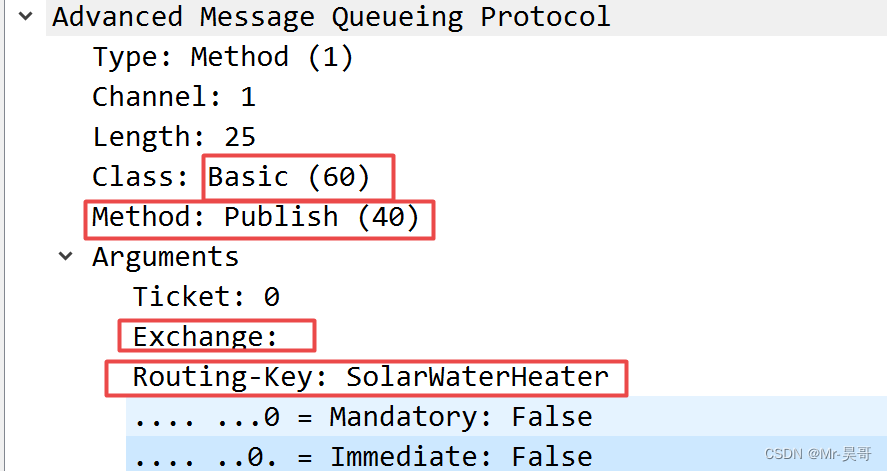
第二个:头信息

第三个:消息内容:

3、消费者监听
业务代码是要开启一个监听然后将此监听发送到MQ中
//4.开启监听Queue
DefaultConsumer consumer = new DefaultConsumer(channel) {
@Override
public void handleDelivery(String consumerTag, Envelope envelope, AMQP.BasicProperties properties, byte[] body) throws IOException {
try {
Thread.sleep(1000);
} catch (InterruptedException e) {
e.printStackTrace();
}
System.out.println("小明洗澡用水: " + new String(body, "UTF-8"));
}
};
/**
* 参数1:queue 指定消费哪个队列
* 参数1:deliverCallback 指定是否ACK(true:收到消息会立即告诉RabbiMQ,false:手动告诉)
* 参数1:cancelCallback 指定消费回调
*/
channel.basicConsume(QUEUE_NAME, true, consumer);我们从basicConsume跟进去:一直到ChannelN 的 basicConsume 中去:
/** Public API - {@inheritDoc} */
@Override
public String basicConsume(String queue, final boolean autoAck, String consumerTag,
boolean noLocal, boolean exclusive, Map<String, Object> arguments,
final Consumer callback)
throws IOException
{
// 拼装 Method 对象,Basic.Consume 后续传输使用
final Method m = new Basic.Consume.Builder()
.queue(queue)
.consumerTag(consumerTag)
.noLocal(noLocal)
.noAck(autoAck)
.exclusive(exclusive)
.arguments(arguments)
.build();
// 声明监听对象 为后续 传输至MQ,MQ返回消息接收使用
BlockingRpcContinuation<String> k = new BlockingRpcContinuation<String>(m) {
@Override
public String transformReply(AMQCommand replyCommand) {
String actualConsumerTag = ((Basic.ConsumeOk) replyCommand.getMethod()).getConsumerTag();
_consumers.put(actualConsumerTag, callback);
// need to register consumer in stats before it actually starts consuming
metricsCollector.basicConsume(ChannelN.this, actualConsumerTag, autoAck);
dispatcher.handleConsumeOk(callback, actualConsumerTag);
return actualConsumerTag;
}
};
// 核心调用 传输信息
rpc(m, k);
try {
if(_rpcTimeout == NO_RPC_TIMEOUT) {
return k.getReply();
} else {
try {
return k.getReply(_rpcTimeout);
} catch (TimeoutException e) {
throw wrapTimeoutException(m, e);
}
}
} catch(ShutdownSignalException ex) {
throw wrap(ex);
}
}然后经过后面的方法,还会上面的Method对象包装一层 成为 AMQCommand,最后又调用到了和生产者调用一致的部分:不再赘述了。
AMQPCommand
public void transmit(AMQChannel channel) throws IOException {
到此为止,就会出现疑问了,我们把消费的信息推送给MQ了,啥时候消费,啥时候调用我们自定义的监听的消费方法呢?这里相当于一个异步了,断层了。
这个就得往后看了,实际上是后续MQ得知有消费者注册到queue上之后,就会推送给消费者消息,消费者再去获取这个消息。先不急。
看下网络数据包的情况:
这时候我们先产生一个交互,先告诉MQ说,我是个消费者,想要消费SolarWaterHeater 这个队列的消息了。MQ如果告诉他,可以。后续MQ再推送消息过来。

协议信息内容:

4、创建连接
我们看下创建连接的部分:因为无论生产者和消费者与MQ交互都得首先创建连接,而且创建连接里面还干了一件重要的事,来解决刚才上面提到的 如何消费MQ推送过来的消息的问题。
业务创建连接代码:
Connection connection = null;
//创建Connection工厂
ConnectionFactory factory = new ConnectionFactory();
factory.setVirtualHost("my-test-virtual");
factory.setPassword("test");
factory.setUsername("test");
factory.setHost("127.0.0.1");
factory.setPort(5672);
//拿到连接
try {
connection = factory.newConnection();跟进newConnection : 来到 ConnectionFactory .newConnection
public Connection newConnection(ExecutorService executor, AddressResolver addressResolver, String clientProvidedName)
throws IOException, TimeoutException {
if(this.metricsCollector == null) {
this.metricsCollector = new NoOpMetricsCollector();
}
// make sure we respect the provided thread factory
FrameHandlerFactory fhFactory = createFrameHandlerFactory();
ConnectionParams params = params(executor);
// set client-provided via a client property
if (clientProvidedName != null) {
Map<String, Object> properties = new HashMap<String, Object>(params.getClientProperties());
properties.put("connection_name", clientProvidedName);
params.setClientProperties(properties);
}
if (isAutomaticRecoveryEnabled()) {
// see com.rabbitmq.client.impl.recovery.RecoveryAwareAMQConnectionFactory#newConnection
AutorecoveringConnection conn = new AutorecoveringConnection(params, fhFactory, addressResolver, metricsCollector);
conn.init();
return conn;
} else {
List<Address> addrs = addressResolver.getAddresses();
Exception lastException = null;
for (Address addr : addrs) {
try {
// 创建 FrameHandler
FrameHandler handler = fhFactory.create(addr, clientProvidedName);
// 组装AMQConnection 对象
AMQConnection conn = createConnection(params, handler, metricsCollector);
// 核心启动
conn.start();
this.metricsCollector.newConnection(conn);
return conn;
} catch (IOException e) {
lastException = e;
} catch (TimeoutException te) {
lastException = te;
}
}
if (lastException != null) {
if (lastException instanceof IOException) {
throw (IOException) lastException;
} else if (lastException instanceof TimeoutException) {
throw (TimeoutException) lastException;
}
}
throw new IOException("failed to connect");
}
}所做的一切,拿配置,地址,拼接FrameHandler 都是为了 组装 AMQConnection 对象,组装对象完成后即需要,conn.start(); 启动连接。继续往下跟:
/**
* Start up the connection, including the MainLoop thread.
* Sends the protocol
* version negotiation header, and runs through
* Connection.Start/.StartOk, Connection.Tune/.TuneOk, and then
* calls Connection.Open and waits for the OpenOk. Sets heart-beat
* and frame max values after tuning has taken place.
* @throws IOException if an error is encountered
* either before, or during, protocol negotiation;
* sub-classes {@link ProtocolVersionMismatchException} and
* {@link PossibleAuthenticationFailureException} will be thrown in the
* corresponding circumstances. {@link AuthenticationFailureException}
* will be thrown if the broker closes the connection with ACCESS_REFUSED.
* If an exception is thrown, connection resources allocated can all be
* garbage collected when the connection object is no longer referenced.
*/
public void start()
throws IOException, TimeoutException {
initializeConsumerWorkService();
initializeHeartbeatSender();
this._running = true;
// Make sure that the first thing we do is to send the header,
// which should cause any socket errors to show up for us, rather
// than risking them pop out in the MainLoop
AMQChannel.SimpleBlockingRpcContinuation connStartBlocker =
new AMQChannel.SimpleBlockingRpcContinuation();
// We enqueue an RPC continuation here without sending an RPC
// request, since the protocol specifies that after sending
// the version negotiation header, the client (connection
// initiator) is to wait for a connection.start method to
// arrive.
_channel0.enqueueRpc(connStartBlocker);
try {
// The following two lines are akin to AMQChannel's
// transmit() method for this pseudo-RPC.
_frameHandler.setTimeout(handshakeTimeout);
_frameHandler.sendHeader();
} catch (IOException ioe) {
_frameHandler.close();
throw ioe;
}
this._frameHandler.initialize(this);
AMQP.Connection.Start connStart;
AMQP.Connection.Tune connTune = null;
try {
connStart =
(AMQP.Connection.Start) connStartBlocker.getReply(handshakeTimeout/2).getMethod();
_serverProperties = Collections.unmodifiableMap(connStart.getServerProperties());
Version serverVersion =
new Version(connStart.getVersionMajor(),
connStart.getVersionMinor());
if (!Version.checkVersion(clientVersion, serverVersion)) {
throw new ProtocolVersionMismatchException(clientVersion,
serverVersion);
}
String[] mechanisms = connStart.getMechanisms().toString().split(" ");
SaslMechanism sm = this.saslConfig.getSaslMechanism(mechanisms);
if (sm == null) {
throw new IOException("No compatible authentication mechanism found - " +
"server offered [" + connStart.getMechanisms() + "]");
}
String username = credentialsProvider.getUsername();
String password = credentialsProvider.getPassword();
LongString challenge = null;
LongString response = sm.handleChallenge(null, username, password);
do {
Method method = (challenge == null)
? new AMQP.Connection.StartOk.Builder()
.clientProperties(_clientProperties)
.mechanism(sm.getName())
.response(response)
.build()
: new AMQP.Connection.SecureOk.Builder().response(response).build();
try {
Method serverResponse = _channel0.rpc(method, handshakeTimeout/2).getMethod();
if (serverResponse instanceof AMQP.Connection.Tune) {
connTune = (AMQP.Connection.Tune) serverResponse;
} else {
challenge = ((AMQP.Connection.Secure) serverResponse).getChallenge();
response = sm.handleChallenge(challenge, username, password);
}
} catch (ShutdownSignalException e) {
Method shutdownMethod = e.getReason();
if (shutdownMethod instanceof AMQP.Connection.Close) {
AMQP.Connection.Close shutdownClose = (AMQP.Connection.Close) shutdownMethod;
if (shutdownClose.getReplyCode() == AMQP.ACCESS_REFUSED) {
throw new AuthenticationFailureException(shutdownClose.getReplyText());
}
}
throw new PossibleAuthenticationFailureException(e);
}
} while (connTune == null);
} catch (TimeoutException te) {
_frameHandler.close();
throw te;
} catch (ShutdownSignalException sse) {
_frameHandler.close();
throw AMQChannel.wrap(sse);
} catch(IOException ioe) {
_frameHandler.close();
throw ioe;
}
try {
int channelMax =
negotiateChannelMax(this.requestedChannelMax,
connTune.getChannelMax());
_channelManager = instantiateChannelManager(channelMax, threadFactory);
int frameMax =
negotiatedMaxValue(this.requestedFrameMax,
connTune.getFrameMax());
this._frameMax = frameMax;
int heartbeat =
negotiatedMaxValue(this.requestedHeartbeat,
connTune.getHeartbeat());
setHeartbeat(heartbeat);
_channel0.transmit(new AMQP.Connection.TuneOk.Builder()
.channelMax(channelMax)
.frameMax(frameMax)
.heartbeat(heartbeat)
.build());
_channel0.exnWrappingRpc(new AMQP.Connection.Open.Builder()
.virtualHost(_virtualHost)
.build());
} catch (IOException ioe) {
_heartbeatSender.shutdown();
_frameHandler.close();
throw ioe;
} catch (ShutdownSignalException sse) {
_heartbeatSender.shutdown();
_frameHandler.close();
throw AMQChannel.wrap(sse);
}
// We can now respond to errors having finished tailoring the connection
this._inConnectionNegotiation = false;
}上面这段代码比较长,也是最核心的启动连接代码了,其实他的注释已经说的很清楚了,我们来看下注释:
* Start up the connection, including the MainLoop thread. 启动连接,包括MainLoop thread 重点来了-后续我们的消费消息,就主要靠这哥们了。 * Sends the protocol 发送协议 * version negotiation header, and runs through 协议头 * Connection.Start/.StartOk, Connection.Tune/.TuneOk, and then 这都是建立连接的相关协议内容了 * calls Connection.Open and waits for the OpenOk. 有来有回 * Sets heart-beat 心跳 * and frame max values after tuning has taken place.所以,这个方法主要是发送创建连接的各种协议,双方经过沟通建立连接的过程。当然,最最最重要的一点,创建了MainLoop
创建连接的内容,我们不在过多关注了,我们主要看下创建的MainLoop,
找到:
this._frameHandler.initialize(this);跟进去:一直跟到 AMQConnection.startMainLoop
public void startMainLoop() {
MainLoop loop = new MainLoop();
final String name = "AMQP Connection " + getHostAddress() + ":" + getPort();
mainLoopThread = Environment.newThread(threadFactory, loop, name);
mainLoopThread.start();
}很明显MainLoop 是一个线程,通过 ThreadFactory new出来,并启动了。来看下这个线程是做什么的:
private class MainLoop implements Runnable {
/**
* Channel reader thread main loop. Reads a frame, and if it is
* not a heartbeat frame, dispatches it to the channel it refers to.
* Continues running until the "running" flag is set false by
* shutdown().
*/
@Override
public void run() {
boolean shouldDoFinalShutdown = true;
try {
while (_running) {
Frame frame = _frameHandler.readFrame();
readFrame(frame);
}
} catch (Throwable ex) {
if (ex instanceof InterruptedException) {
// loop has been interrupted during shutdown,
// no need to do it again
shouldDoFinalShutdown = false;
} else {
handleFailure(ex);
}
} finally {
if (shouldDoFinalShutdown) {
doFinalShutdown();
}
}
}
}读注释即可:
* Channel reader thread main loop. Reads a frame, 读数据帧 * and if it is not a heartbeat frame, 如果不是心跳帧 * dispatches it to the channel it refers to. 分发到对应的处理channel中去 * Continues running until the "running" flag is set false by shutdown(). 一直在持续运行,直至关闭总结:
这就很清楚了,这是一个无限循环的线程,一直在读取Broker传递给我们的信息,读到对应的非心跳的内容,转交到对应的处理类进行处理。
到这里我们是不是有些思路了,其实 消费者的消费就是在这里监听到,并处理的。
截止到此,创建连接的内容完毕,并引出了MainLoop的内容。
5、消费者消费
好,我们继续看下这个死循环,是如何读消息的:
Frame frame = _frameHandler.readFrame();
这个是读到的消息,并包装成了Frame 对象,我们不再看这部分内容了
继续:跟进
readFrame(frame);private void readFrame(Frame frame) throws IOException {
if (frame != null) {
_missedHeartbeats = 0;
if (frame.type == AMQP.FRAME_HEARTBEAT) {
// Ignore it: we've already just reset the heartbeat counter.
} else {
if (frame.channel == 0) { // the special channel
_channel0.handleFrame(frame);
} else {
if (isOpen()) {
// If we're still _running, but not isOpen(), then we
// must be quiescing, which means any inbound frames
// for non-zero channels (and any inbound commands on
// channel zero that aren't Connection.CloseOk) must
// be discarded.
ChannelManager cm = _channelManager;
if (cm != null) {
ChannelN channel;
try {
channel = cm.getChannel(frame.channel);
} catch(UnknownChannelException e) {
// this can happen if channel has been closed,
// but there was e.g. an in-flight delivery.
// just ignoring the frame to avoid closing the whole connection
LOGGER.info("Received a frame on an unknown channel, ignoring it");
return;
}
channel.handleFrame(frame);
}
}
}
}
} else {
// Socket timeout waiting for a frame.
// Maybe missed heartbeat.
handleSocketTimeout();
}
}上面的内容是真正的去解析处理 读到的Frame 的内容了,我们看 channel.handleFrame(frame);
即可,继续追踪:
public void handleFrame(Frame frame) throws IOException {
AMQCommand command = _command;
if (command.handleFrame(frame)) { // a complete command has rolled off the assembly line
_command = new AMQCommand(); // prepare for the next one
handleCompleteInboundCommand(command);
}
}继续追踪处理:
command.handleFrame(frame)
这个实际上是解析消息的具体内容,然后设置到对应的对象中的属性中去了。pass掉了
继续:
handleCompleteInboundCommand(command);
追踪至 AMQChannel中的
handleCompleteInboundCommand- >
processAsync(command)
一至到ChannelN 中的 processAsync
/**
* Protected API - Filters the inbound command stream, processing
* Basic.Deliver, Basic.Return and Channel.Close specially. If
* we're in quiescing mode, all inbound commands are ignored,
* except for Channel.Close and Channel.CloseOk.
*/
@Override public boolean processAsync(Command command) throws IOException
{
// If we are isOpen(), then we process commands normally.
//
// If we are not, however, then we are in a quiescing, or
// shutting-down state as the result of an application
// decision to close this channel, and we are to discard all
// incoming commands except for a close and close-ok.
Method method = command.getMethod();
// we deal with channel.close in the same way, regardless
if (method instanceof Channel.Close) {
asyncShutdown(command);
return true;
}
if (isOpen()) {
// We're in normal running mode.
if (method instanceof Basic.Deliver) {
processDelivery(command, (Basic.Deliver) method);
return true;
} else if (method instanceof Basic.Return) {
callReturnListeners(command, (Basic.Return) method);
return true;
} else if (method instanceof Channel.Flow) {
Channel.Flow channelFlow = (Channel.Flow) method;
synchronized (_channelMutex) {
_blockContent = !channelFlow.getActive();
transmit(new Channel.FlowOk(!_blockContent));
_channelMutex.notifyAll();
}
return true;
} else if (method instanceof Basic.Ack) {
Basic.Ack ack = (Basic.Ack) method;
callConfirmListeners(command, ack);
handleAckNack(ack.getDeliveryTag(), ack.getMultiple(), false);
return true;
} else if (method instanceof Basic.Nack) {
Basic.Nack nack = (Basic.Nack) method;
callConfirmListeners(command, nack);
handleAckNack(nack.getDeliveryTag(), nack.getMultiple(), true);
return true;
} else if (method instanceof Basic.RecoverOk) {
for (Map.Entry<String, Consumer> entry : Utility.copy(_consumers).entrySet()) {
this.dispatcher.handleRecoverOk(entry.getValue(), entry.getKey());
}
// Unlike all the other cases we still want this RecoverOk to
// be handled by whichever RPC continuation invoked Recover,
// so return false
return false;
} else if (method instanceof Basic.Cancel) {
Basic.Cancel m = (Basic.Cancel)method;
String consumerTag = m.getConsumerTag();
Consumer callback = _consumers.remove(consumerTag);
if (callback == null) {
callback = defaultConsumer;
}
if (callback != null) {
try {
this.dispatcher.handleCancel(callback, consumerTag);
} catch (WorkPoolFullException e) {
// couldn't enqueue in work pool, propagating
throw e;
} catch (Throwable ex) {
getConnection().getExceptionHandler().handleConsumerException(this,
ex,
callback,
consumerTag,
"handleCancel");
}
}
return true;
} else {
return false;
}
} else {
// We're in quiescing mode == !isOpen()
if (method instanceof Channel.CloseOk) {
// We're quiescing, and we see a channel.close-ok:
// this is our signal to leave quiescing mode and
// finally shut down for good. Let it be handled as an
// RPC reply one final time by returning false.
return false;
} else {
// We're quiescing, and this inbound command should be
// discarded as per spec. "Consume" it by returning
// true.
return true;
}
}
}开始逐步烧脑了,这一段debug的时候,记得开启Thread模式哦。
首先看方法名吧:processAsync 明显的一个异步处理,究竟处理啥?看注释:
* Protected API - Filters the inbound command stream, processing * Basic.Deliver, Basic.Return and Channel.Close specially. If * we're in quiescing mode, all inbound commands are ignored, * except for Channel.Close and Channel.CloseOk.处理 Basic.Deliver, Basic.Return and Channel.Close ,我们最关注的是 Deliver 投递对吧,
这就是Broker把消息投递给我们呢方法。
所以,我们找到了我们的关注点:
if (method instanceof Basic.Deliver) {
processDelivery(command, (Basic.Deliver) method);
return true;继续哦:
protected void processDelivery(Command command, Basic.Deliver method) {
Basic.Deliver m = method;
Consumer callback = _consumers.get(m.getConsumerTag());
if (callback == null) {
if (defaultConsumer == null) {
// No handler set. We should blow up as this message
// needs acking, just dropping it is not enough. See bug
// 22587 for discussion.
throw new IllegalStateException("Unsolicited delivery -" +
" see Channel.setDefaultConsumer to handle this" +
" case.");
}
else {
callback = defaultConsumer;
}
}
Envelope envelope = new Envelope(m.getDeliveryTag(),
m.getRedelivered(),
m.getExchange(),
m.getRoutingKey());
try {
// call metricsCollector before the dispatching (which is async anyway)
// this way, the message is inside the stats before it is handled
// in case a manual ack in the callback, the stats will be able to record the ack
metricsCollector.consumedMessage(this, m.getDeliveryTag(), m.getConsumerTag());
this.dispatcher.handleDelivery(callback,
m.getConsumerTag(),
envelope,
(BasicProperties) command.getContentHeader(),
command.getContentBody());
} catch (WorkPoolFullException e) {
// couldn't enqueue in work pool, propagating
throw e;
} catch (Throwable ex) {
getConnection().getExceptionHandler().handleConsumerException(this,
ex,
callback,
m.getConsumerTag(),
"handleDelivery");
}
}哦哦,我们看到了什么 Consumer callback ,消费者回调,That's whant we want.
this.dispatcher.handleDelivery(callback, m.getConsumerTag(), envelope, (BasicProperties) command.getContentHeader(), command.getContentBody());
继续哦
进入到了ConsumerDispatcher
handleDelivery
public void handleDelivery(final Consumer delegate,
final String consumerTag,
final Envelope envelope,
final AMQP.BasicProperties properties,
final byte[] body) throws IOException {
executeUnlessShuttingDown(
new Runnable() {
@Override
public void run() {
try {
delegate.handleDelivery(consumerTag,
envelope,
properties,
body);
} catch (Throwable ex) {
connection.getExceptionHandler().handleConsumerException(
channel,
ex,
delegate,
consumerTag,
"handleDelivery");
}
}
});
}哇,handleDelivery 有没有很熟悉,我们的业务代码监听不就是实现的她吗? 真的是她吗?
是她是她就是她。。。

再来波回忆杀:
DefaultConsumer consumer = new DefaultConsumer(channel) {
@Override
public void handleDelivery(String consumerTag, Envelope envelope, AMQP.BasicProperties properties, byte[] body) throws IOException {
try {
Thread.sleep(1000);
} catch (InterruptedException e) {
e.printStackTrace();
}
System.out.println("小明洗澡用水: " + new String(body, "UTF-8"));
}
};好了,到此我们终于找到了,是死循环读来的消息,调用回调Consumer,调用到了子类的实现的handleDelivery 方法,真正的去实现消息的消费。
不过还没完,她到底是怎么触发的呢?
private void executeUnlessShuttingDown(Runnable r) {
if (!this.shuttingDown) execute(r);
}
private void execute(Runnable r) {
checkShutdown();
this.workService.addWork(this.channel, r);
}继续来到
ConsumerWorkService.addWork
public void addWork(Channel channel, Runnable runnable) {
if (this.workPool.addWorkItem(channel, runnable)) {
this.executor.execute(new WorkPoolRunnable());
}
}继续:WorkPool
addWorkItem
/**
* Add (enqueue) an item for a specific client.
* No change and returns <code><b>false</b></code> if client not registered.
* If <i>dormant</i>, the client will be marked <i>ready</i>.
* @param key the client to add to the work item to
* @param item the work item to add to the client queue
* @return <code><b>true</b></code> if and only if the client is marked <i>ready</i>
* — <i>as a result of this work item</i>
*/
public boolean addWorkItem(K key, W item) {
VariableLinkedBlockingQueue<W> queue;
synchronized (this) {
queue = this.pool.get(key);
}
// The put operation may block. We need to make sure we are not holding the lock while that happens.
if (queue != null) {
enqueueingCallback.accept(queue, item);
synchronized (this) {
if (isDormant(key)) {
dormantToReady(key);
return true;
}
}
}
return false;
}这稍微有点绕了,首先我们要从 Map 缓存pool 取出 一个 VariableLinkedBlockingQueue
根据啥取呢,根据的是Channel,所以每个Channel是相独立的,Blocking Queue后续的操作也是阻塞的。
来到 了
enqueueingCallback.accept(queue, item);这是个啥鬼? 这又一个回调,使用了@FunctionalInterface
真实的方法在初始WorkPool 的时候
public WorkPool(final int queueingTimeout) {
if (queueingTimeout > 0) {
this.enqueueingCallback = (queue, item) -> {
try {
boolean offered = queue.offer(item, queueingTimeout, TimeUnit.MILLISECONDS);
if (!offered) {
throw new WorkPoolFullException("Could not enqueue in work pool after " + queueingTimeout + " ms.");
}
} catch (InterruptedException e) {
Thread.currentThread();
}
};
} else {
this.enqueueingCallback = (queue, item) -> {
try {
queue.put(item);
} catch (InterruptedException e) {
Thread.currentThread().interrupt();
}
};
}
}我们看后面的else内容即可:
queue.put(item);What ?竟然把内容放到了一个本地的BlockingQueue 中去了,放的啥内容呢?
就是我们前面的那个线程对象
Runnable runnable倒腾一下嘛,就是那个
delegate.handleDelivery(consumerTag, envelope, properties, body);有点意思了吧,把整个需要消费的内容扔进了队列里,这时候程序就可以返回给MainLoop了,他有可以继续抓包了。
但我们还没结束,对吧,继续咯
代码倒回来:
if (this.workPool.addWorkItem(channel, runnable)) {
this.executor.execute(new WorkPoolRunnable());
}这次要看
executor.execute了
首先我们看下这个 ExecutorService executor 这个没特殊指定的话,我们再初始Connection的时候就会初始化这个 ConsumerWorkService,就把 executor 初始化了,一个固定的线程池:
public ConsumerWorkService(ExecutorService executor, ThreadFactory threadFactory, int queueingTimeout, int shutdownTimeout) {
this.privateExecutor = (executor == null);
this.executor = (executor == null) ? Executors.newFixedThreadPool(DEFAULT_NUM_THREADS, threadFactory)
: executor;
this.workPool = new WorkPool<>(queueingTimeout);
this.shutdownTimeout = shutdownTimeout;
}几个线程呢?
private static final int DEFAULT_NUM_THREADS = Runtime.getRuntime().availableProcessors() * 2;当前计算机的核数 * 2 , 八核的就是初始化 16个线程。
这16个线程是跟随Connection的,所以,每个Connection就只有这16个线程在处理呗。
继续咯
this.executor.execute(new WorkPoolRunnable());又要搞个线程,
private final class WorkPoolRunnable implements Runnable {
@Override
public void run() {
int size = MAX_RUNNABLE_BLOCK_SIZE;
List<Runnable> block = new ArrayList<Runnable>(size);
try {
Channel key = ConsumerWorkService.this.workPool.nextWorkBlock(block, size);
if (key == null) return; // nothing ready to run
try {
for (Runnable runnable : block) {
runnable.run();
}
} finally {
if (ConsumerWorkService.this.workPool.finishWorkBlock(key)) {
ConsumerWorkService.this.executor.execute(new WorkPoolRunnable());
}
}
} catch (RuntimeException e) {
Thread.currentThread().interrupt();
}
}
}终于等到你,这就是我们核心中的核心了,触发消费也就靠这了。
这个线程被线程池搞起后,做啥了呢?
1.声明一个 16个大小的 ArrayList
2. 取出我们的BlockingQueue,再接着呢,从Queue中取出16个Runnable对象【真正的消费逻辑】,放到ArrayList 中
3. 循环16个 Runable对象,直接调用其run 方法, 这时候自然就调到了我们的handleDelivery- 业务方法愉快的去消费了。
4. 最后呢,还要看我们这队列中还没有待处理的数据了,如果还要有的话,通过线程池再起线程继续执行 WorkPoolRunnable 的run 方法,也就是本方法,
如果队列中一直有消息,而且还一直有消息进来,那线程池就会一直在启线程处理,直到16个线程都启动满负载运转,这时候就会存在本地BlockingQueue的堆积了。
补充下消费的抓包情况:

第一个AMQP

第二个:

第三个:
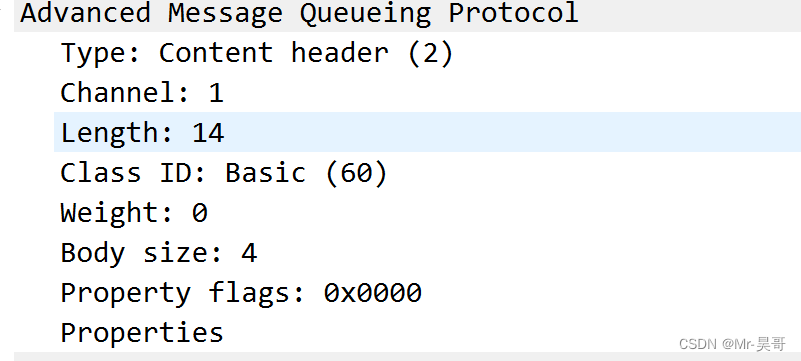
第四个:消息内容:

6. 总结:
总的来说,amqp的代码相对简单的,最绕的就是消费者那块了。
首先是靠 MainLoop驱动,
其次,将消息内容的处理方法投递到了本地 BlockingQueue中,
最后,靠启动线程取出Queue中的处理方法,进行本地消费。
来个汇总小图,大家结合代码看:

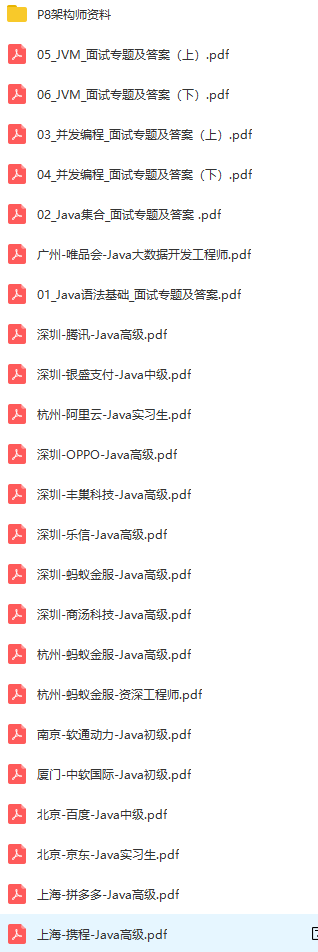





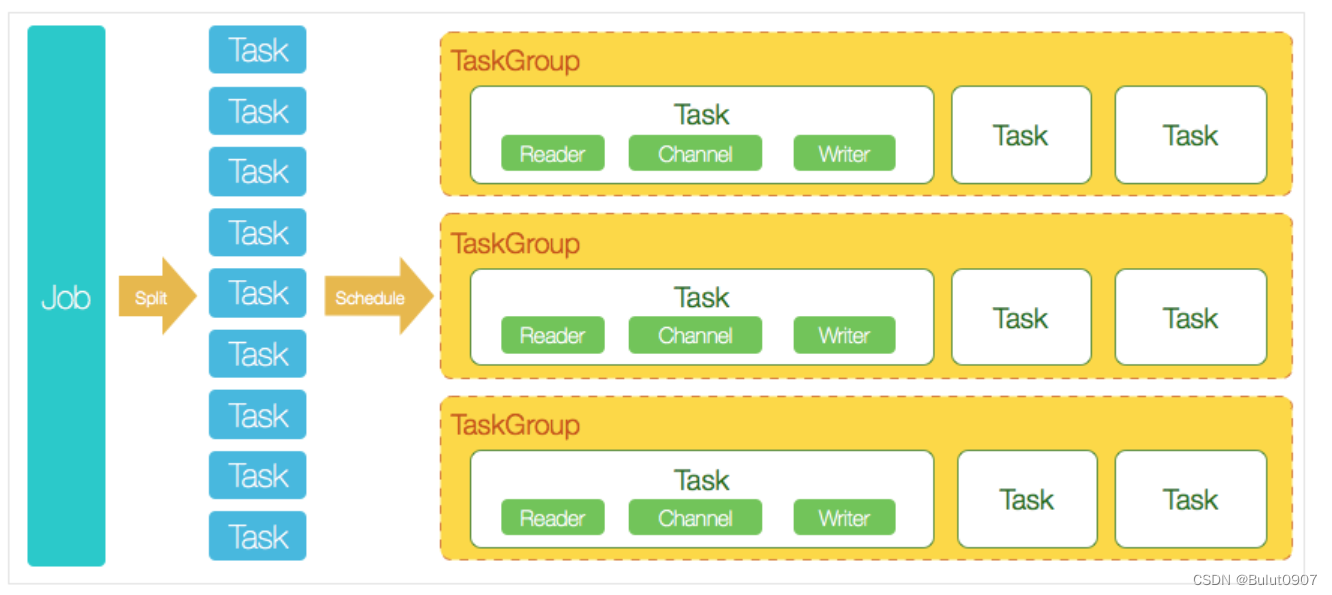
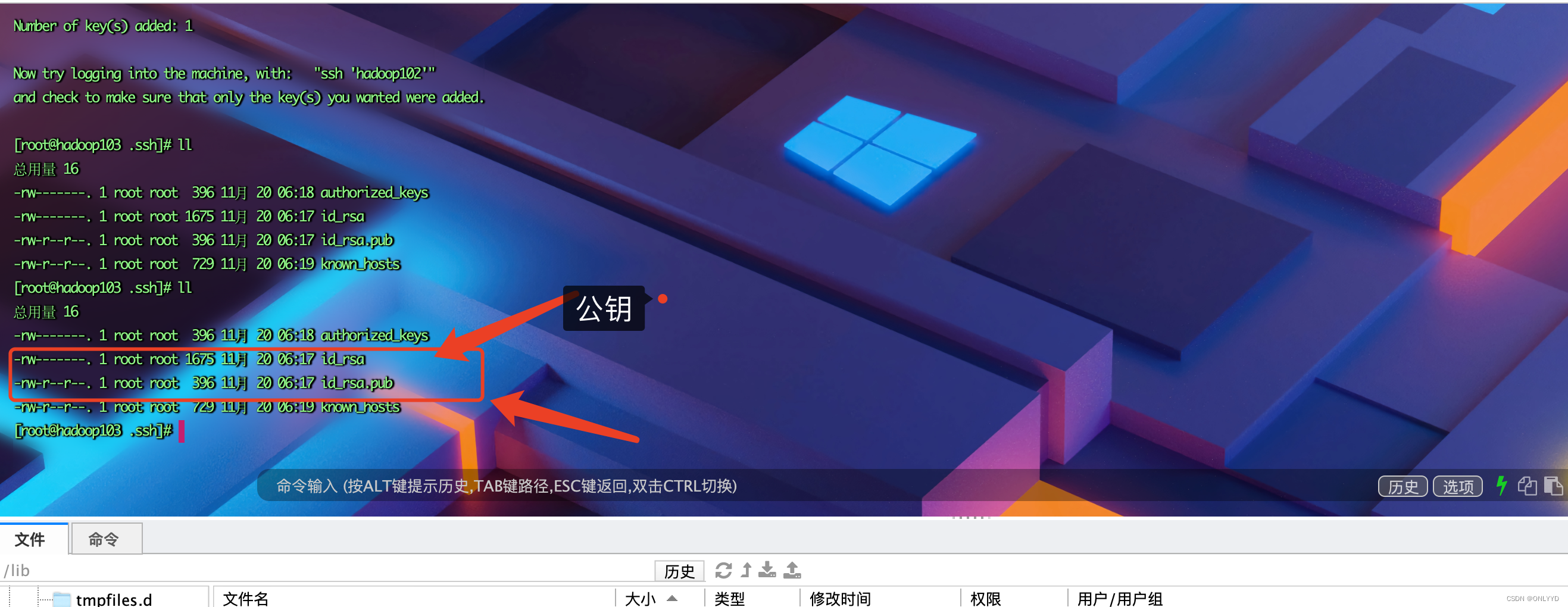




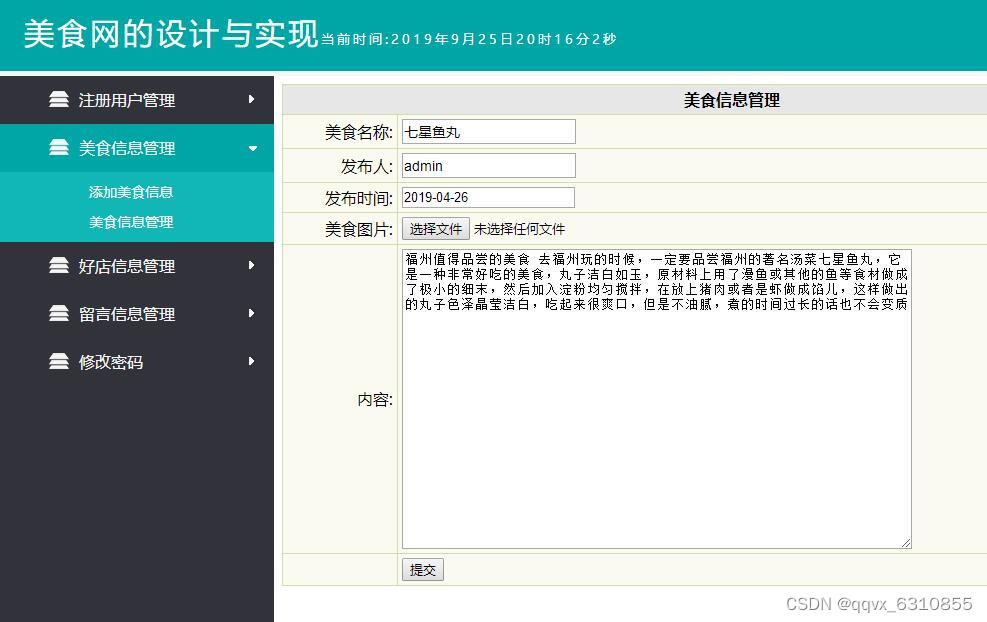

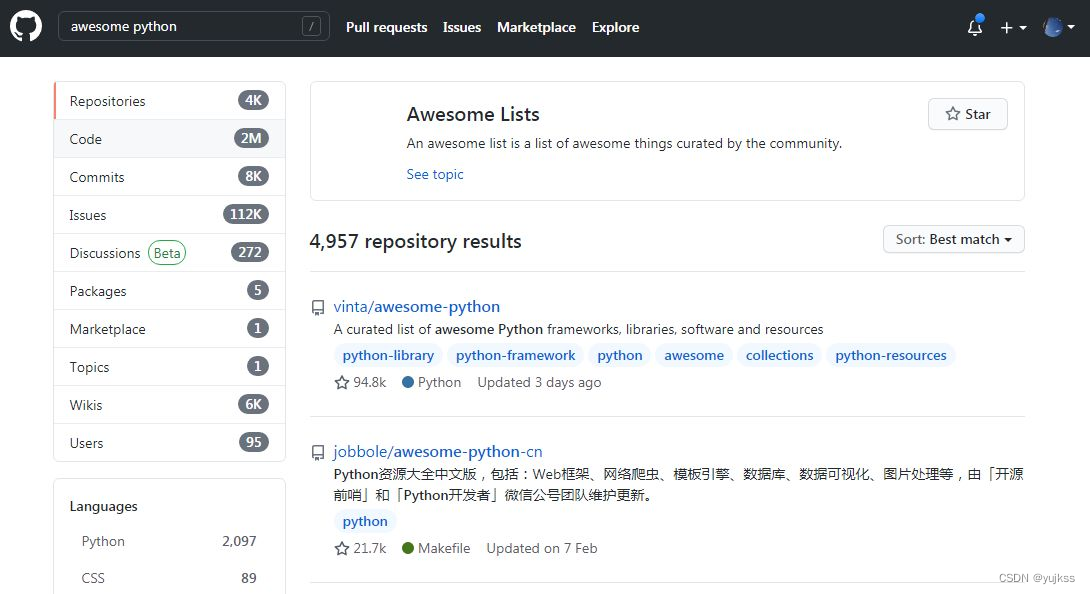
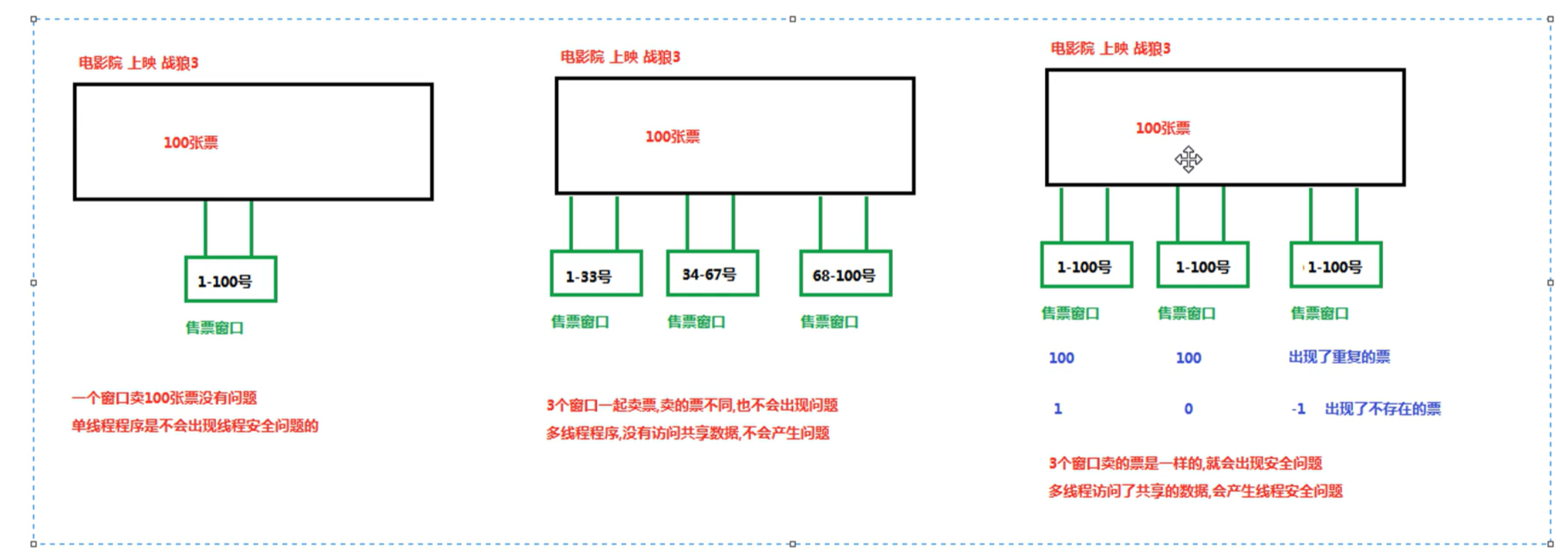
![[附源码]SSM计算机毕业设计高校教师教学助手系统的设计与实现JAVA](https://img-blog.csdnimg.cn/9da2adb4bf4e40769fe87c8e40b73e2b.png)


